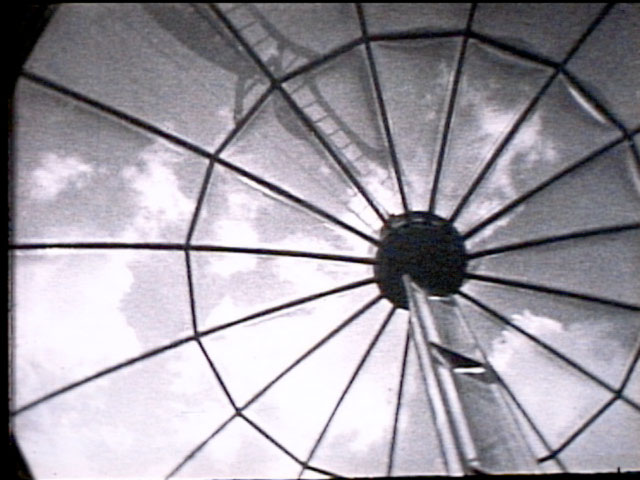
At the beginning of his film, Chris Marker provides us with a picture of complete happiness, as he calls it - the picture of three girls on a road on Iceland. This picture always appeared to me not emblematic but harassing. Does it switch his film into an uncritical mode? "He says…" he was not able to combine this picture with any other picture and that he was always thinking that sometime he would open a film sequence with the three girls and then let it be followed by a long black leader. In fact, he is combining the shot of the girls with the clean and hyper-aesthetic pictures of warfare, - and black leader. However, at the end of his film they appear again, after the narrator has pointed out to us the existence of emus on the Isle de France. Chris Marker cuts the three girls in between as if they just happened to be there. He thus closes his film with them, who have already become a memory (to the viewer), this time " showing the clip in its full length."
I will open my film (I dare to) with a sentimental picture of happiness and we will see how the end will happen to be.
At the beginning of a new time the new development of the epoch comes in the guise of old times. Glass and steel came too early in the nineteenth century according to Walter Benjamin. Steel frames flouerished in ornamental and organic manner. If the glass and steel constructions of the first greenhouses came too early, what does the picture of their still existing spaces tell us in our time?
 |
| Cumberland Station in Chicago, Filmstill of "Slow Space", the film in construction |
American architects, at the turn of the last century, discovered that there was no more need for glass covered orifices in buildings. Thomas Edison and the cities' new large power suplies provided them with the newest invention: large amounts of electrical lightbulbs flooding the interior of buildings with an intensity as bright as daylight. (The Merchandise Mart in Chicago is a good example of this novelty.) The new material, glass, became obsolescent in some peoples opinion before it had its time.
The velocity of changes, the predestined progress of our time is a myth, is only the return of the same. On the other hand, the political belief in the cycle of infinite recurrence is a myth, too, that stands against any change of society. The dialectic of history could be seen that way. To demythify velocity, as well as history, thus may have been one of Benjamin's goals. However, the possiblity of radical change must stay a dream (or a myth!) until it firstly has been undertaken.
- As we have lost hope in a proletarian revolution, it could be interesting to rethink that dream.
At the end of the last, the twentieth, century some philosphers even see windows as obsolete: wires intrude and virtual images bombard the interior. There is no more contemplative retreat behind solid walls, the window is no longer a lookout to the world. Accordingly (?), the architect Tschumi built the Video Gallery for Groningen completely as a box of glass.